Last updated on 22 June 2024
Discovered accidentally in the rocky gorge of the river Cherni Lom, Orlova Chuka is one of the most fascinating caves in Bulgaria and the second longest in the country.
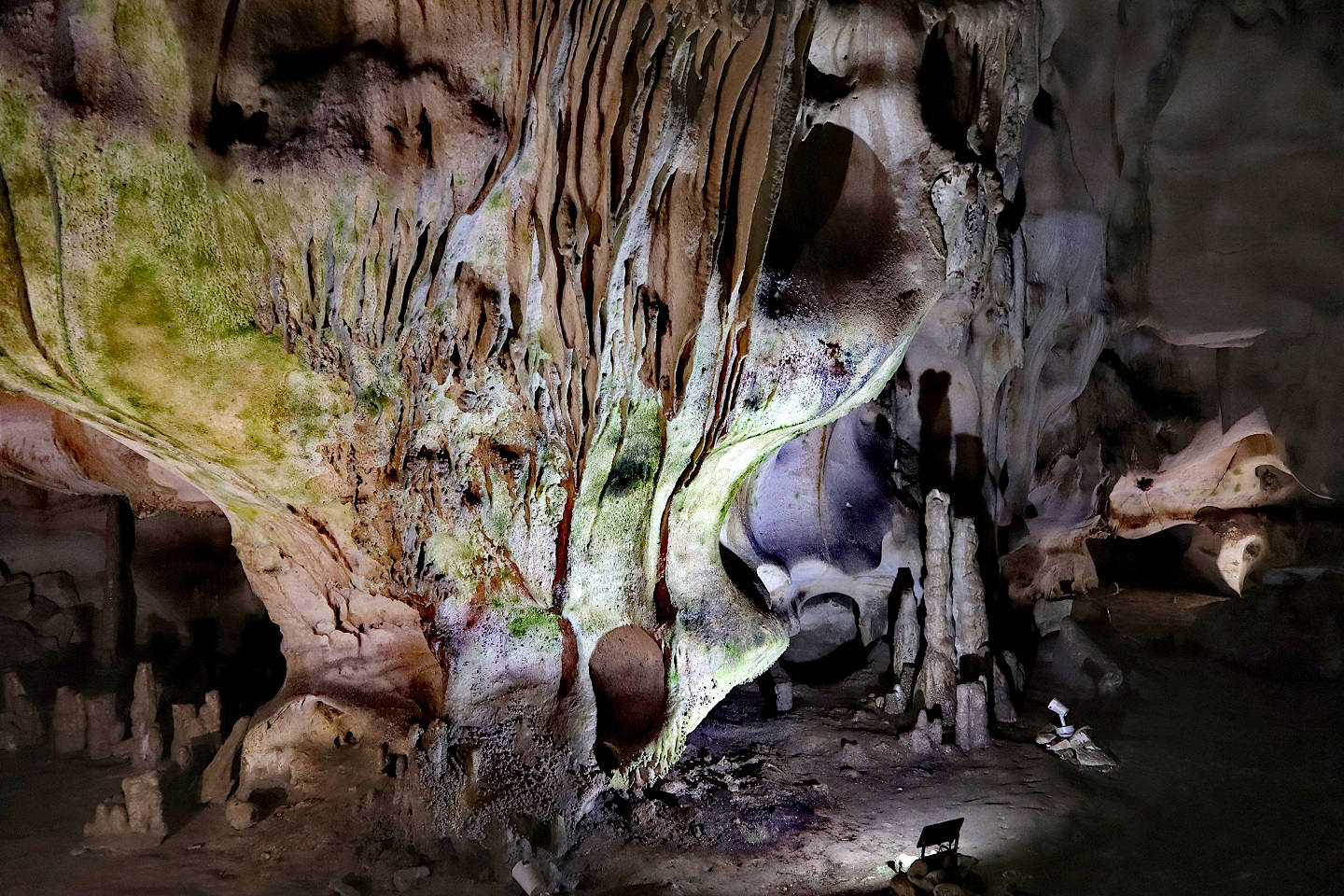
Surroundings
Orlova Chuka is located on a picturesque terrace 80 m above the river Cherni Lom. The name of the cave (orel means eagle in Bulgarian) is related to the rocks surrounding the entrance as it used to be a refuge for eagles. Near the entrance, visitors can enjoy the stunning panorama of the canyon and its rock formations.

History
One of the most interesting things about the cave is probably its discovery. Orlova Chuka was discovered purely by chance in the summer of 1941 by a local shepherd grazing his flock in the area. The animals gathered around a small hole and he could feel the flow of cool air. As the original entrance was barely accessible, 124 stone steps were built and an artificial passage was drilled in 1959 to serve as an entrance. It was declared a natural landmark in 1963 and is an archeological cultural monument of national importance since 1978.
Orlova Chuka is the second longest cave in Bulgaria with a total length of about 13,500 meters. To be precise, 13,474 m of it have been mapped and the surveys still continue to this day. Now about 3 km on the upper level of the cave is accessible and lightened for visitors as show cave.
Inside the cave
The temperature in the cave is relatively constant throughout the year around 14 ° C. This is quite warm for a cave but a real escape from the heat on hot summer days.

Orlova Chuka is a complex system of tunnels ranging from easily passable to very narrow that connect about 10 halls of different sizes. The cave was formed in Cretaceous limestone that deposited at the bottom of the former Sarmatian Sea. The halls were formed much later as a result of the karst processes that took place during the Quaternary.
The bottom is covered with fine sand and clay, colored in stripes with rusty colored layers. The materials have been brought into the cave through the openings of sinkholes, which are visible on the highest parts of the ceiling.

Apart from its second place among the longest caves in Bulgaria, Orlova Chuka amazes with its enviable cave formations. There are a variety of stone formations in the halls, including stalactites and stalagmites.
The artificial entrance of the cave leads to the first cave hall which was initially called The Great Lobby. After the Ruse Philharmonic Orchestra gave a concert here in 1976, the hall changed its name to The Concert Hall. With its amazing natural acoustics, the concert was a great success. It is noteworthy that among the beautiful draperies in the Concert Hall, visitors can see the Great Stalagnate with a height of 3.5 m and a diameter of 50 cm.
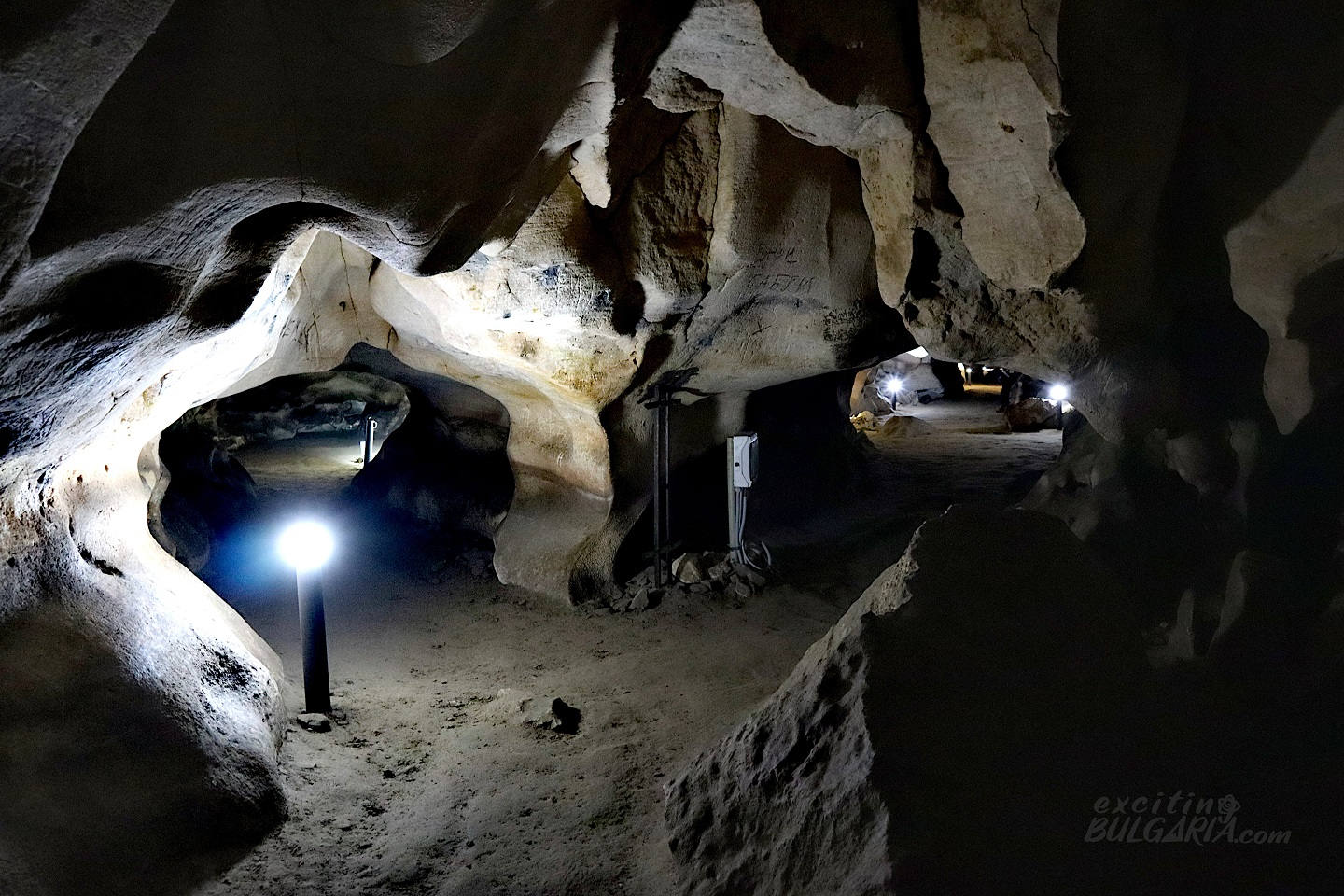
To the west of the Concert Hall stretches the Great Gallery, famous for the cascading, very beautiful small sinter ponds, sculpted from silver calcite decorated with fine stalactites and filled with crystal clear water. To the northeast of the Concert Hall begins a narrow, unlit tunnel that leads to the so-called Little Chasm.
The Great Gallery then leads to the largest and most developed hall in the cave, called the Large Scree (Golemite Sipei). This is also the end of the landscaped part of the cave. The hall was named after the huge rocks on its bottom. Sinter formations can be seen on the walls, resembling snakes, football players, and so on, while the bottom is covered with bat manure, as this hall is one of the cave’s favorite habitats for bats.
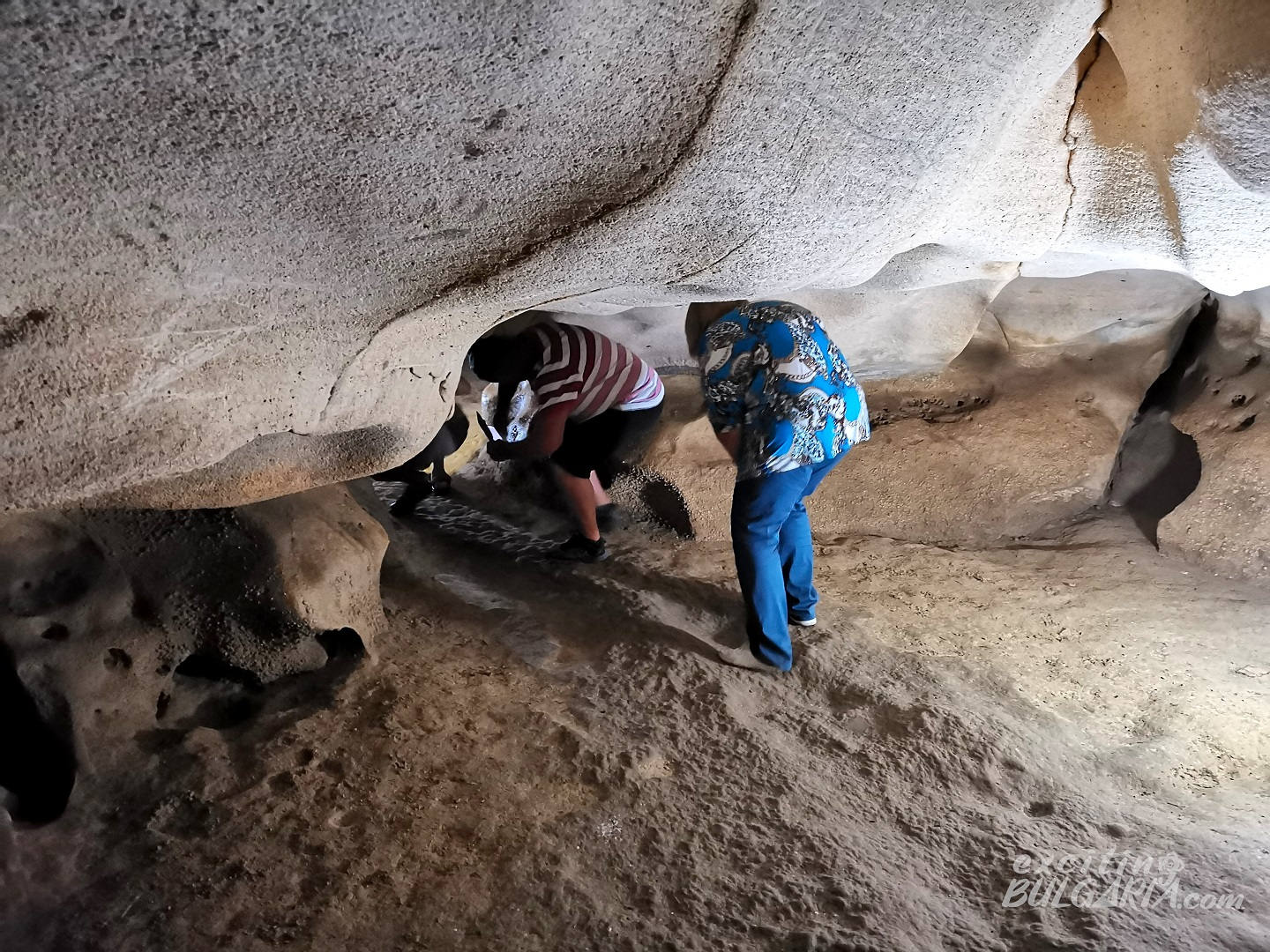
Another landmark of the cave is the sinter pond called the Spring (Izvorcheto). It is said that whoever drinks from its water will have their deepest wish come true.
Orlova Chuka is also believed to have been inhabited by prehistoric people. Archeological findings such as flint knives, scrapers, spearheads and remains of pottery suggest that the cave was inhabited by humans during the Paleolithic and later during the Eneolithic (4000 – 2000 years BC).
It is a little-known fact that in the 80s doctors from Ruse experimented with asthmatics. Breathing in the cave really feels easier due to the high ionization of the air.

Fauna
Orlova Chuka is home to about 10,000 bats representing 14 different species. The largest colonies are of the long-fingered bat (Myotis capaccinii), the greater horseshoe bat (Rhinolophus ferrumequinum) and Mehely’s horseshoe bat (Rhinolophus mehelyi). Some of the species are included in the World Red List of the International Union for the Conservation of Nature (IUCN). However, all species of bats are strictly protected by the Biodiversity Act in Bulgaria. The cave is the most important winter refuge of the greater horseshoe bat and Mehely’s horseshoe bat in all of the country.
There are other species of cave-loving animals inhabiting the cave such as hopscotch, spiders and beetles.
Visiting Orlova Chuka
Location
Orlova Chuka Cave is located 35 km south of Ruse, near the village Pepelina. The cave can be reached on a very narrow, unnumbered asphalt road that branches off from road 501 between Ivanovo and Dve Mogili. The road leads to a decent-size parking, but there is another parking area further down the road, closer to the entrance. Parking is free of charge.
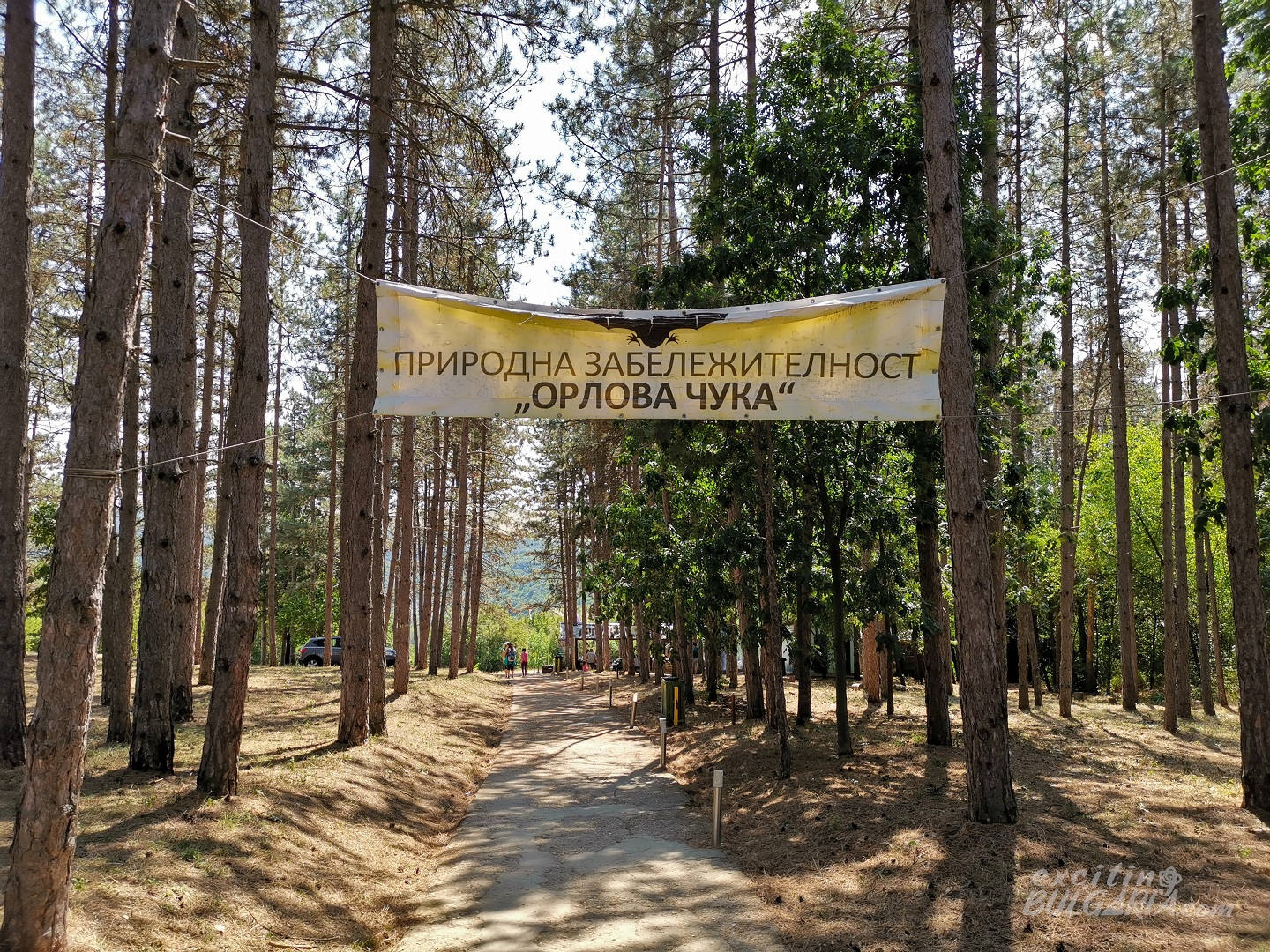
Getting to the cave is only possible either by car or an organized bus tour as there is no public transport to it.
Opening hours and tickets
Orlova Chuka is open for visitors from April 1 to October 31 without a day off and can only be entered with a guide. Tours take about 40 minutes and start every hour between 09:00 and 17:00. Tickets to the cave are sold in the bar to the left. The ticket price for adults is 6 BGN.
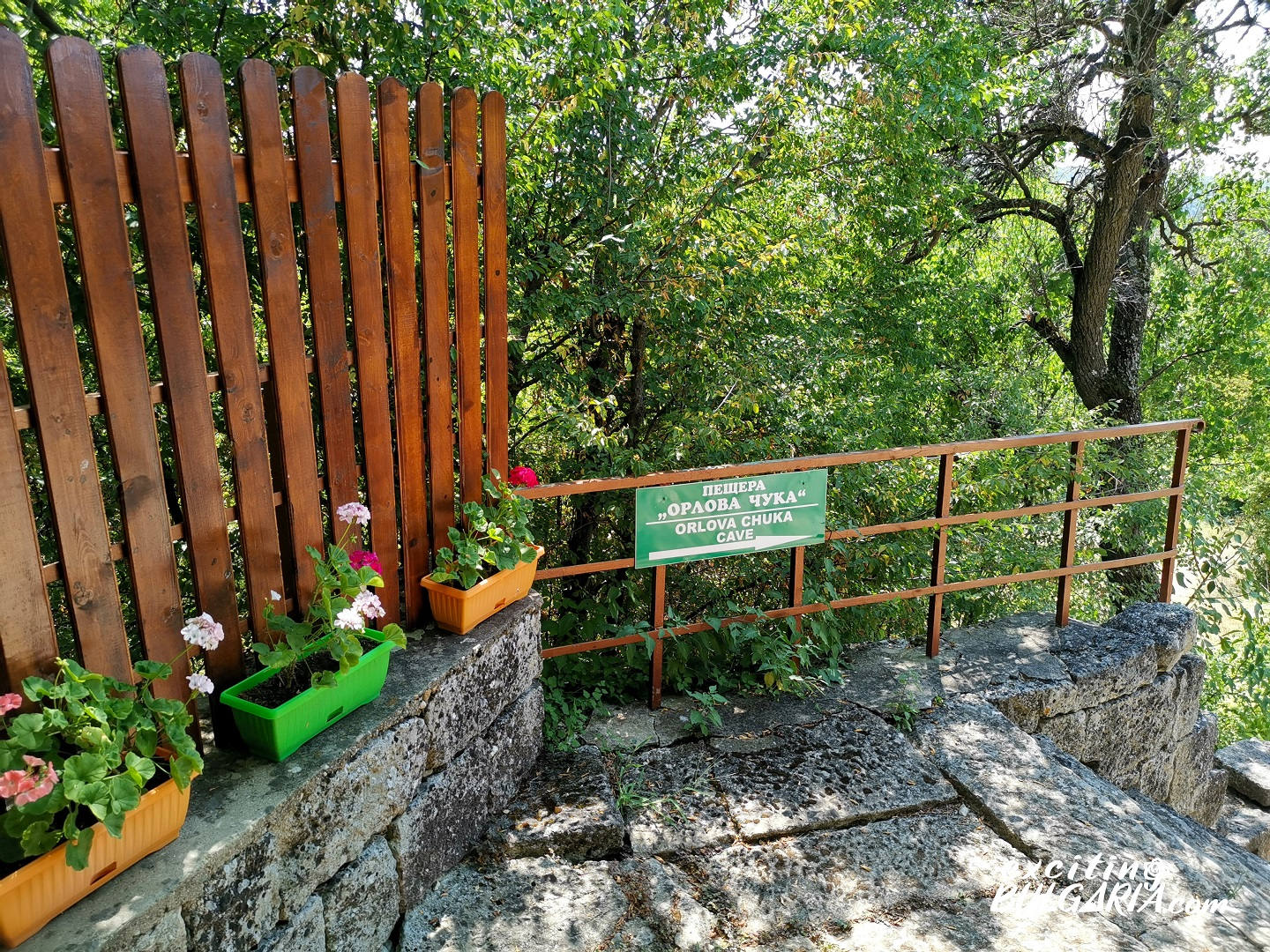
From the bar, follow the signs down the hill until you reach the stone stairs. The entrance of the cave is at the bottom of the stairs.
Taking pictures in the cave is allowed (and even encouraged), but please note that it is forbidden to light a fire, disturb the animals or to go into the unfinished halls of the cave.
Map
What to see nearby
There is a lot to see around the cave. The amazing city centre of Ruse is only 15 minutes away while the Ivanovo Rock Hewn Churches (UNESCO World Heritage Site), the Cherven fortress or the Basarbovo Monastery are all within an hour by car.